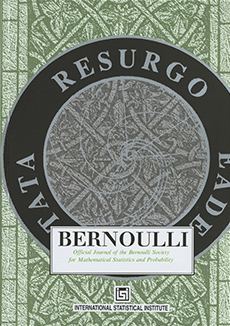Abstract
Although unbiasedness is a basic property of a good test, many tests on vector parameters or scalar parameters against two-sided alternatives are not finite-sample unbiased. This was already noticed by Sugiura [Ann. Inst. Statist. Math. 17 (1965) 261–263]; he found an alternative against which the Wilcoxon test is not unbiased. The problem is even more serious in multivariate models. When testing the hypothesis against an alternative which fits well with the experiment, it should be verified whether the power of the test under this alternative cannot be smaller than the significance level. Surprisingly, this serious problem is not frequently considered in the literature.
The present paper considers the two-sample multivariate testing problem. We construct several rank tests which are finite-sample unbiased against a broad class of location/scale alternatives and are finite-sample distribution-free under the hypothesis and alternatives. Each of them is locally most powerful against a specific alternative of the Lehmann type. Their powers against some alternatives are numerically compared with each other and with other rank and classical tests. The question of affine invariance of two-sample multivariate tests is also discussed.
Citation
Jana Jurečková. Jan Kalina. "Nonparametric multivariate rank tests and their unbiasedness." Bernoulli 18 (1) 229 - 251, February 2012. https://doi.org/10.3150/10-BEJ326
Information





